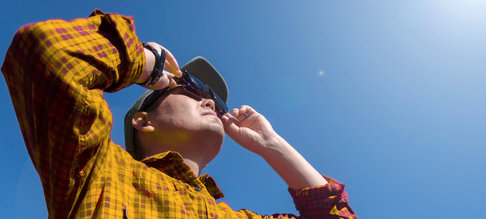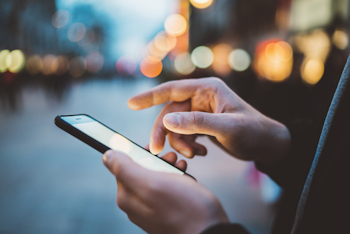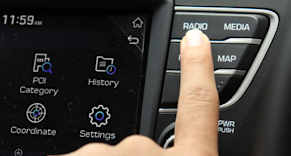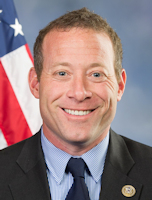
| Publisher: Information Station Specialists |
 |
| What will happen when the internet gets eclipsed? |
| Special glasses can protect us during a solar eclipse. Not so much, an "internet eclipse." |
| On April 8, the moon’s shadow sliced an arc across North America from Mexico to Maine. 3.7 million eclipse enthusiasts crowded that 120-mile-wide corridor to view “totality” before turning to depart in a mass exodus. But no one parted this sea of vehicles. First-responders had difficulty reaching those who needed help. Food, fuel and medical services were in short supply. Three counties in Texas issued local states of emergency, preparing for a doubling of their populations in the days around the event. But worse was the communications gridlock. The eclipse happened where it happened, without regard for cell-tower-capacity. Cellular services – especially in lower-capacity areas – overloaded, leaving both travelers and residents without the ability to make calls. Cellular is the gateway to the internet, especially for those on wheels. When it is maxed out, everything from the delivery of wayfinding assistance, to weather warnings, to emergency notices is impacted. |
 |
| Does this have a familiar “ring” to it? Recall that on February 22, AT&T’s cellular network went offline nationwide for 12 hours, stranding millions who were unable to make calls; some found themselves without prescriptions and lifesaving services. The FBI and DHS launched inquiries, and on March 7, the FCC followed suit. AT&T has blamed the incident on an “incorrect process” that was used while expanding their network. Why such an error required 12 hours to correct was not explained. Just three weeks before that interruption, a Congressional Committee had been reminded by FBI Director Christopher Wray that bad actors in other countries are targeting our infrastructure, intending to cause “real world harm” to US citizens. Jen Easterly, head of the US Cybersecurity and Infrastructure Security Agency, advised the Committee that Americans need to prepare for an unexpected cyberattack. It's hard to get any more direct than that. That testimony, the AT&T outage and the recent eclipse have raised the awareness of many US communities to a reality: for the sake of public safety, we are remiss if we do not provide a backstop for citizens when digital communications are interrupted. |
 |
| In a crisis, smart people are discovering it’s not so smart to rely on your smartphone. |
| Four counties near Indianapolis – Hendricks, Morgan, Shelby and Boone – have stepped up, instituting Emergency Advisory AM Radio Signals to be available for citizens, not only for the eclipse, but in anticipation of future wireless service outages. Morgan County applied for a 100-watt special license for the first two weeks of April and installed a higher wattage antenna to bolster their signal coverage over Interstate 69, which parallels the eclipse-path through the County. Shelby and Hendricks Counties StreamCAST their radio programming to the internet in an effort to reach PCs and network-connected devices, which are less likely to be affected by service volume than mobile phones. Disruption of wireless service is frequently the result of disasters such as hurricanes, tornados, earthquakes and wildfires – as evidenced on Maui in 2023. Hawaii Emergency Management Agency brought in portable emergency radio stations in the aftermath of that tragedy, to advise returning residents on the status of the recovery and special procedures. Orangeburg County in South Carolina – an area subject to flooding – this month is completing the installation of twelve emergency advisory stations that will provide coverage over virtually their entire county. But a cyberattack due to malicious activity or war could be way worse. It could eclipse not only the wireless infrastructure but the internet itself, presenting the potential to be dramatically more devasting; its duration, its scope and its geography could be a lot larger. Hundreds of communities nationwide have implemented emergency advisory radio services in anticipation, to preserve a means of getting lifesaving messages to the public when all else fails. To learn if radio frequencies are available in your community, email us. Unlike a natural phenomenon, this approaching shadow is not one that can be predicted to the second. But, as our leaders are advising, it can be predicted. |
| AM Preservation Act Poised to Pass with Popular Support |
| WASHINGTON, DC: Landmark legislation to prevent AM radio receivers from being kicked to the curb by carmakers will now pass the House of Representatives when it is introduced. The “AM In Every Vehicle Act’s” sponsor, New Jersey Congressman Josh Gottenheimer, announced on March 11th that the 218th voting supporter had been secured. “It’s on its way to becoming law.” |
 |
| The act would require all automobiles sold in the United States to have AM radio receivers conspicuously in their dashboards. Gottenheimer recently stated: “AM radio is the backbone of America’s National Public Warning System… We can’t let car manufacturers put public safety and emergency response at risk, just to save a few nickels.” He pointed out that Congress has approved ongoing funding to harden the largest AM Broadcast Stations with the installation of emergency generators and special studios, saying that investment in public safety would be at risk if automakers were allowed to take a sudden turn. Surveys show that more than 40 million Americans regularly listen to AM and virtually everyone has a way to access an AM receiver when it counts. |
 |
| Rep. Josh Gottenheimer, NJ |
| Photo by Kristie Boyd, US House |
| This legislation can be considered “landmark” in these turbulent political times because it has secured strong support from both sides of the aisle, as few bills in recent memory have. In addition to the 218 House members, 46 Senators are currently on the record in support. The public has submitted more than 400,000 emails and letters urging Congress to act. Last May, Ford Motor Company read the political winds and abruptly put their decision to eliminate AM in electric (and other) vehicles in reverse. Six weeks ago, it announced it is reactivating the AM receivers in the only two EVs that did not have it, through a software update. Until the law passes, Gottenheimer is calling on the National Highway Traffic Safety Administration (NTSB) to require automakers to label vehicles without AM receivers as “unsafe in certain emergencies.” |
* * *
| UNESCO Designates Radio Our "First Responder" |
| NEW YORK, NY: The UN’s UNESCO agency has always called on “education, science, culture, communication and information to foster mutual understanding.” Now, despite their efforts, in a world that appears increasingly less stable, the agency is getting squarely behind broadcast radio as a critical means of communication in an emergency, recognizing it as the “First Responder of Media.”On February 13, designated “World Radio Day,” it released a broadcast-quality public service announcement, calling broadcast radio a “vital lifeline” and encouraging the “protection of emergency radio frequencies for the public dissemination of vital information.” The Source readers can obtain mp3 formatted copies of the above-linked radio message, appropriate for air on any station by emailing a request. |
PO Box 51, Zeeland, Michigan, USA, 49464-0051, Phone 616.772.2300, Email
• • •